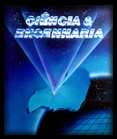NEW METHOD TO DETERMINE THE REDUCTION FACTOR AREA APPLYED TO RAINFALL ESTIMATES
Abstract
The main objective of this work was to develop an area reduction factor (ARF) determination method, which is a coefficient applied to average rainfall estimates for projects, given rainfall at a point. After a review about the subject, it was verified the needs of developing regional studies and the existence of some deficiencies on current approaches. In this sense, it was tried to create an appropriate methodology given the spatial variability of extreme rainfall. Therefore, the new suggested method, differently from the observed in others techniques, is primarily based on objective assessment of the ratio between extreme average rainfall calculated above several areas and the extreme point rainfall observed in gauges located in the center of those areas. After structuring it, the proposed method was tested in a pilot implementation with data obtained from a raingauge network in the region of Córrego Botafogo Basin, urban zone of Goiânia, GO. The results were analyzed regarding the dependence of ARF to area, duration and order of magnitude (in reference to the exceedance probability). It was found a strong relation with area, a minor with duration and the need of further studies about the exceedance probability influence. Lastly, the ARF values obtained with results fitting were compared with those indicated from other employed empirical models. From this study, it can be concluded that proposed methodology is appropriated to determine ARF, as its results are compatibles with assumptions established. Keywords: project rainfall, rainfall spatial distribution, area reduction factor.Downloads
Download data is not yet available.
Downloads
Published
2014-06-23
Issue
Section
Civil Engineering


